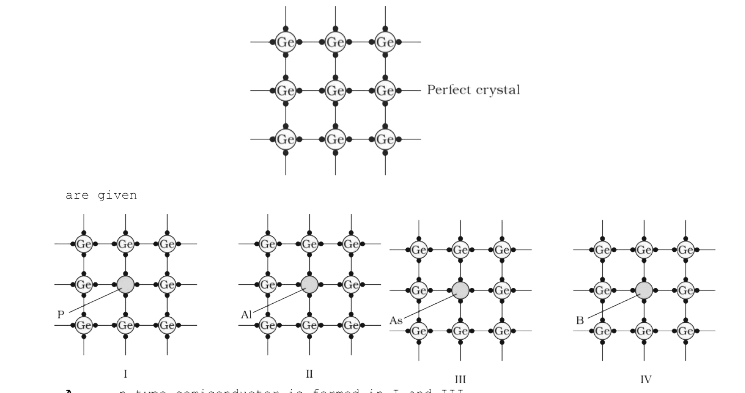The radial symmetry is observed in
Platyhelminthes
II. Coelenterates
IIIgt Aschelminthes
IV. Annelids
v) Echinoderms
The correct statements are
ii and v only
I,ii,iii and v only
ii, iii and I only
I, iii and v only
The correct Answer is:a
To determine which of the given groups exhibit radial symmetry, we can analyze each option step by step:
Step 1: Understand Radial Symmetry
Radial symmetry refers to the arrangement of body parts around a central axis, allowing the organism to be divided into similar halves through multiple planes. This type of symmetry is commonly found in certain groups of animals.
Step 2: Analyze Each Group
1. Platyhelminthes (Flatworms): These organisms exhibit bilateral symmetry, not radial symmetry. They have a distinct head and tail region.
2. Coelenterates (Cnidarians): This group includes jellyfish, corals, and sea anemones, which exhibit radial symmetry. They can be divided into similar halves along multiple planes.
3. Aschelminthes (Nematodes and Rotifers): These organisms also exhibit bilateral symmetry, not radial symmetry.
4. Annelids (Segmented Worms): Annelids show bilateral symmetry as well, with a clear head and tail end.
5. Echinoderms (Starfish and Sea Urchins): Echinoderms exhibit radial symmetry, especially in their adult forms, where they can be divided into similar halves around a central axis.
Step 3: Conclusion
From the analysis:
- Coelenterates (option II) and Echinoderms (option V) exhibit radial symmetry.
- Platyhelminthes (option I), Aschelminthes (option III), and Annelids (option IV) do not exhibit radial symmetry.
Thus, the correct statements regarding radial symmetry are options II and V.
Final Answer
The correct statements are: II. Coelenterates and V. Echinoderms.
---
Radial symmetry refers to the arrangement of body parts around a central axis, allowing the organism to be divided into similar halves through multiple planes. This type of symmetry is commonly found in certain groups of animals.
1. Platyhelminthes (Flatworms): These organisms exhibit bilateral symmetry, not radial symmetry. They have a distinct head and tail region.
2. Coelenterates (Cnidarians): This group includes jellyfish, corals, and sea anemones, which exhibit radial symmetry. They can be divided into similar halves along multiple planes.
From the analysis:
- Coelenterates (option II) and Echinoderms (option V) exhibit radial symmetry.
- Platyhelminthes (option I), Aschelminthes (option III), and Annelids (option IV) do not exhibit radial symmetry.
The correct statements are: II. Coelenterates and V. Echinoderms.
Topper's Solved these Questions
Similar Questions
Select the set of incorrect statements.
I. The circulatory system in Platyhelminthes has a single opening.
II. Annelids are the first animals to have true coelom and metamerism (true segmentation).
III. The space between the hump and the mantle is called the mantle cavity in which gills are present.
IV. Most of the echinoderms are bisexual.
View SolutionConsider the following statements:
Phenyl diazonium salts form azo dye with
I. aniline
II. Phenol
III. N, N - dimethyl aniline
IV. Anisole (methoxybenzene)
The correct statements is
View Solution
Knowledge Check
Refer the given statements
(i) Incomplete or mosaic inheritance is an example of pre-Mendelian concept of blending inheritance
(ii) Test cross is a special type of back cross
(iii) Chromosomal aberrations are commonly observed in cancer cells
(iv) Thalassaemia is a Mendelian disorder
Which of the above statements are correct ?A(i) and (ii) onlyB(ii),(iii) and (iv)C(ii) and (iv) onlyD(i) and (iv) onlyWhich of the following statements are incorrec?
(i) Parapodia are lateral appendages in arthropods used for swimming.
(ii) Radula in molluscs are structures involved in excretion.
(iii) Aschelminthes are dioecious.
(iv) Echinoderm adults show radial symmetry.
(v) Ctenophorans are diploblasticA(i) and (ii)B(i) and (iii)C(i),(iv) and (v)D(iii) and (v)
Read the following statements :
i. Open type circulatory systems are found in Arthropods.
ii. Pseudocoelomates are bilaterally symmetrical.
iii. Most of the sponges are radially symmetrical.
iv. Platyhelminthes have a tissue level of organization.
How many of the above statements are incorrect?
View SolutionSort out the animals on the basis of their symmetry (radial or bilateral) coelenterates, ctenophores, annelids, arthropods and echinoderms.
View SolutionWhich of the following are correct ?
(i) Sponges : Cellular level of organisation
(ii) Cnidaria : Tissue level of organisation
(iii) Platyheminthes : Organ level of organisation
(iv) Annelids, Arthropods, Molluscs, Echinoderms and Chordates : Organ system level of organisation
View SolutionGermanium has been doped with impurity as shown in I, II, III and IV and based as it statements

A. n-type semiconductor is formed in I and III
B. p-type semiconductor is formed in II and IV
C. P-type semiconductor is formed in II and IV
D. p-type semiconductor is formed in I and III Select the correct statement(s).
View SolutionWhich of the following statements are incorrect?
(i) Parapodia are lateral appendages in arthropods used for swimming.
(ii) Radula in molluscs are structures involved in excretion.
(iii) Aschelminthes are dioecious.
(iv) Echinoderm adults show radial symmetry.
(v) Ctenophorans are diploblastic
View SolutionA cell is set up as shown in the figure. It is observed that EMF of the cell comes out to be 2.36 V. Which of the given statements is not correct about the cell?

View Solution
